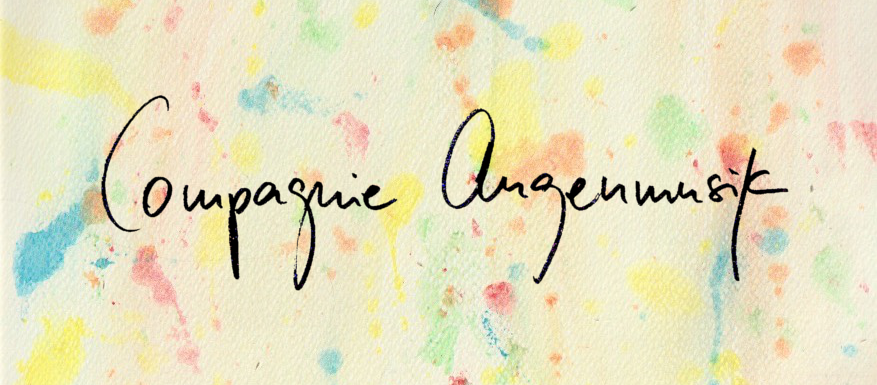Stageplay for deaf and hearing children by age 5+
performed by Jürgen Endress, Katrin Schyns
directed and written by Daniela Krabbe
lighting and stage design by Lukas Wegner
costume design by Céline A. Vajen
dramatic advisement by Sara Vajen
sound design by Till Nicklas
Premiere at the 14th may 2013 at Theaterhaus Frankfurt in cooperation with Kunst für Kinder! e.V.
Funded by the culture board of Frankfurt, Kunst für Kinder! e.V., Citoyen Foundation and Naspa Foundation

On both shores of a lake there are living two. They belong together but they don’t know it. They are destined to get to each other. One is hurrying back and forth on her shore to find him, the other one. He on the other side can see, but he cannot hear her. There is a huge silence under water. But one day they will meet each other…
He cannot hear what she is hearing – she cannot see what he is seeing. But nevertheless they belong together.
An actor and a dancer are developing a new and mutual language in a very silent room. The words of this language are formed by gesture, motions and light.
It is a language behind spoken words. And even the water is playing its part on stage…
All children, the deaf and the hearing ones, are welcome to see, to be astonished and to hear into the silence – to meet each other in a silent way.

The stage play stille.wasser (silent waters) is addressed in the first place to deaf children from the age of five and up. For these children the possibilities to attend theatre in its various forms scarcely exist, even though it should be the place to be experienced in a visual way and to be part of.
The aesthetics of stille.wasser is especially developed for deaf children. Different to the hearing children the visuality of the pictures are more important for the deaf children. Instead of hearing the seeing and feeling are in the focus of their sensorial experiences. For that we visualized sounds and movements in an intense way. A special light design is supported by water reflections and video projections as well as perceptible and visible sounds.
We renounced deliberately a text and at the same time both a spoken and a signed language. To give priority to the audible and perceptible silence even accompanying music isn’t playing a part. For the hearing children on the other hand the experience of silence will be in focus of their attention. But within the bounds of the story and the theatre room they don’t have to miss their sense of hearing because even in the silence there will be much to listen to.
We have deliberately chosen these particular actor and dancer: the deaf actor Jürgen Endress is a specific and authentic role model for the deaf children. The dancer Katrin Schyns is hard of hearing but has currently no access to the deaf world and so she is representing the familiar discrepancy between both worlds.
Instead of using their usual language the actors are acting together in a silent way.
With the devices of drama, dance and other forms of physical and emotional outlets stille.wasser as an event of art is reflecting for the deaf children their own reality and individuality. This artistic form is supposed to communicate to them in an abstract way that their so-called deficit, maintained by the society isn’t a deficit but the exact opposite: their visual intelligence is their very own potential.
To let the deaf children find an access to theatre, stille.wasser is supposed to be played only in theatre rooms. This mostly first contact with theatre should be a new room of participation and the starting point for more cultural experiences.
By letting the hearing and the deaf world meeting each other on the stage to get to know their mutual potential, both worlds are supposed to get together even in the auditorium. So it is very important to pay attention at the equal number of deaf and hearing children in every single performance.
„A sensorial and poetic rapprochement between two people who have to find a way of communication; a celebration of silence with all its undertones. When neither talked nor signed the view is open to see a new form of communication between hearing and deaf people.“ (Frankfurter Rundschau)
